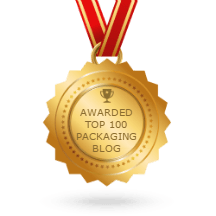Post-Consumer Recycled Packaging. How is it Made?
Learn how your brand can become more sustainable by including post-consumer recycled material in your product packaging
We can’t seem to pick up a newspaper or turn on the TV without seeing the impact plastics are having on the environment. Packaging Digest, in partnership with the Sustainable Packaging Coalition, did a survey in 2018 and the results were shocking. Nearly everyone taking the survey— 93%—believes environmental concerns regarding plastic packaging will continue to grow.
If eco-friendly packaging isn’t part of your branding, it’s still important in the mind of consumers, so its time to start prioritizing and responding to consumer demand, before your competitors get ahead of the curve.
In fact, 78% of packaging professionals say increasing recycling rates are the most effective way to help alleviate the concerns around plastics, and within that 87% say recycling is a viable way to prevent plastic packaging from ending up in marine environments.
How does the recycling process work?
After your curbside recycling is picked up, what happens next?
- Products made from paper and plastic are separated
- The packaging products made of plastics are sent to material recovery facilities where staff sort through any mistakenly placed material and separate items into specific categories
- Once the sorting has been done, the plastics are washed to remove impurities, such as labels and adhesives
- Once clean, the plastic is run through different shredders, dependent on the recycling number associated with the plastic-type
- After shredding, testing is done to confirm their quality and class
- Finally, the shredded plastic is melted into pellets, which are then used for making different types of plastic products – they have then become ‘post-consumer recycled’ (PCR) material
At Emmerson Packaging, we believe that sustainability presents an opportunity. That’s why we offer packaging made from post-consumer recycled material.
How much PCR should I use in my product?
Most manufacturers combine the PCR content with other plastics, such as PET or HDPE to create packaging that is both durable and sustainable. Although 100% PCR packaging is available, with a pure PCR content, there is a chance that your graphics can be compromised due to occasional black flecks.
Why choose PCR packaging?
Simply put, PCR is less wasteful than new plastic. While new plastic mostly comes from non-renewable fossil fuels like petroleum, recycled plastics require no “virgin” petroleum to be sourced and divert recycled materials from ending up in a landfill.
Azocleantech reports that the carbon footprint of producing 100% post-consumer PET is 60% lower than manufacturing virgin PET –this includes the energy required to collect, recycle, and remanufacture the plastics!
While you may not be looking to jump in 100% post-consumer PET, you can contact our experts today to see how we can help you on your sustainability journey with PCR content. For example, our SmartPack™ which has a #2 rating, can be created with a percentage of PCR resin, to give your brand the perfect package. Will your brand lead the sustainable pack, simply keep up, or be left behind?
If you want to know more, you can contact us here.


